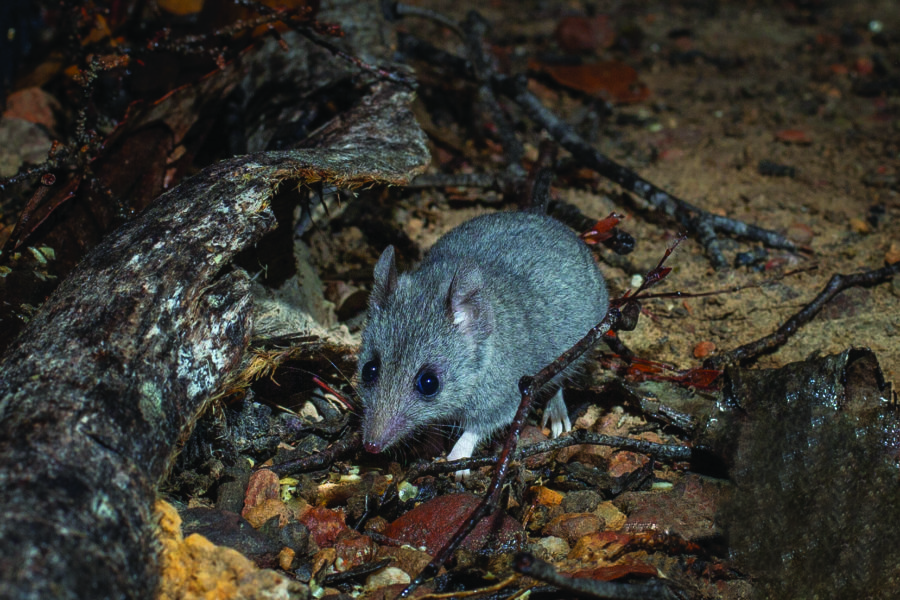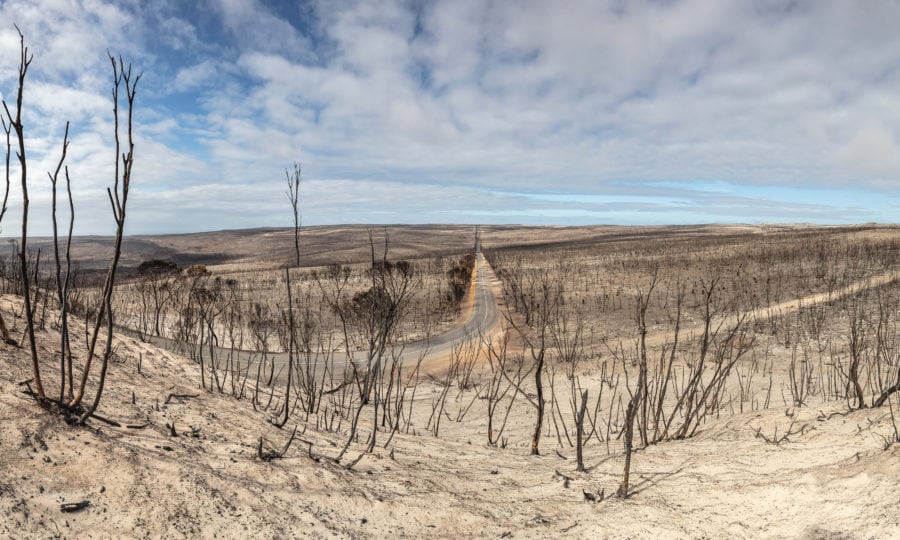Rare image of the Kangaroo Island dunnart captured

THERE WERE anxious days in early January when it looked as if the Black Summer fires had caused Australia’s 28th mammal extinction – that the flames had forced the Kangaroo Island dunnart over the brink. Weighing less than 25g when fully grown and with a diet of mostly insects, the dunnart is like a tiny quoll.
It lives only on Kangaroo Island (KI) in South Australia and by mid-January it was known that it had lost more than 95 per cent of its habitat to fire. Most of that was in Flinders Chase National Park, in KI’s west, which was almost completely burnt at the beginning of the year.
There were, however, eight sites on private property where conservation organisation Kangaroo Island Land for Wildlife (KILfW) had been monitoring small populations of the species for about two years. “But in December we had lost all but one of those to fires,” KILfW ecologist
Heidi Groffen says.
Then, in early January, dunnart activity was confirmed within tiny patches of unburnt bushland in KI’s west and the Australian Wildlife Conservancy (AWC) moved in swiftly with scientific support staff and funds to help KILfW and private landholders secure what few animals were left and stop the species from being sucked down an extinction vortex.
The most significant immediate threat was feral cats. “Before the fires, we had plans in place to fence the property where the dunnarts were detected,” Heidi says, explaining AWC support meant that could happen immediately after the fires.
“We initially fenced a critical refuge of 13ha where we knew there was still a dunnart population,” says Dr Eridani Mulder, the AWC’s senior wildlife ecologist, who coordinated the emergency scientific response to secure the species.
“A longer-term project will see about 300ha more fenced on that property to enclose the smaller protected area.” The refuge site was first cleared of feral cats by AWC trapper Murray Schofield, and the fence continues to be monitored to keep it clear of cats and prevent any breaking in to decimate the tiny remaining dunnart population.
“We’ve since detected dunnarts outside the critical refuge but inside the area of the planned larger refuge so that was a very exciting day!” Eridani says.
How many KI dunnarts survive in total? Because the animals are so small and occur in sparse numbers across a relatively large area, the species is hard to study, and estimates have always been unconfirmed. But most ecologists believe before the fires there would have been fewer than 500.
Post-fires, “a handful” is the best anyone will say. Few people have seen one in real life. Even Heidi has only ever seen a camera-trap image. “But we do know the dunnart is now the number-one [mammal] species in Australia closest to extinction, and if we hadn’t acted as we did after the fires we’d have probably lost it by now,” she says. “While we’ve saved it for now, there’s still a long way to go to ensure it survives into the future.”
Photographer Brad Leue used a DSLR camera trap system of his own making to capture this image of the embattled Kangaroo Island dunnart.
“It has the same principles as a trail camera trap but with the high quality output of a DSLR camera…”
“This particular shot took seven nights to achieve – adjusting focus, lighting and camera positions to target the animal’s regular movements.
“A lot of patience, trial and error and a bit of luck.”


